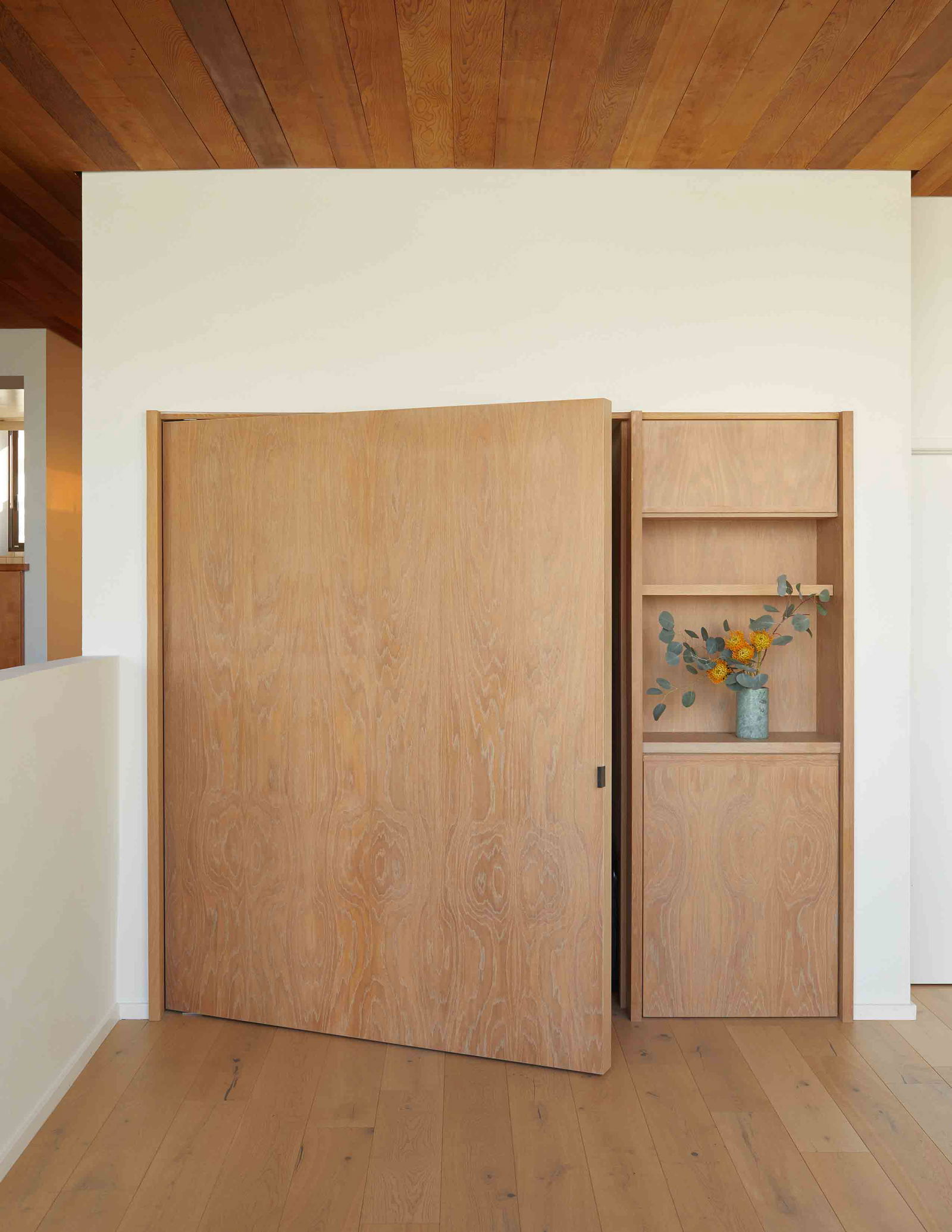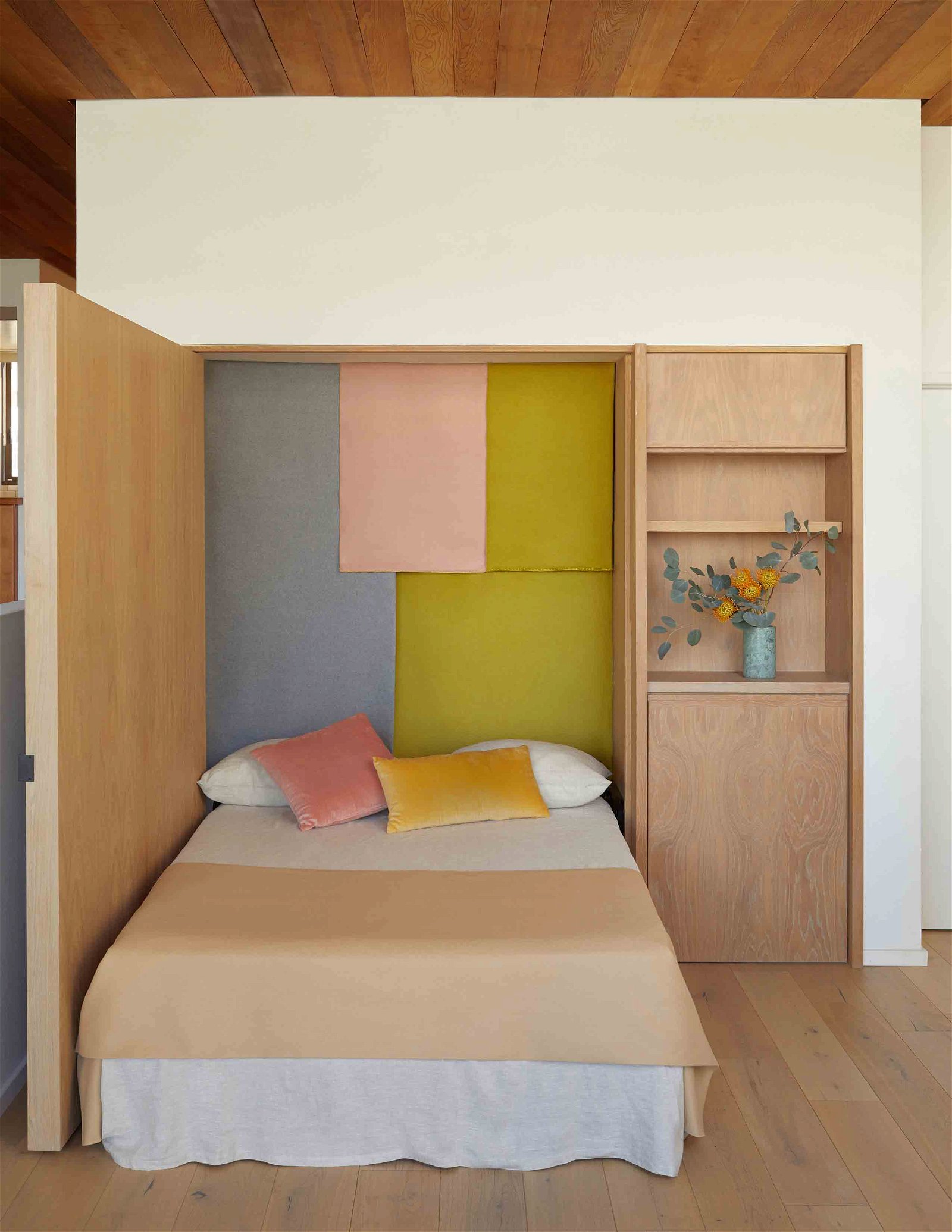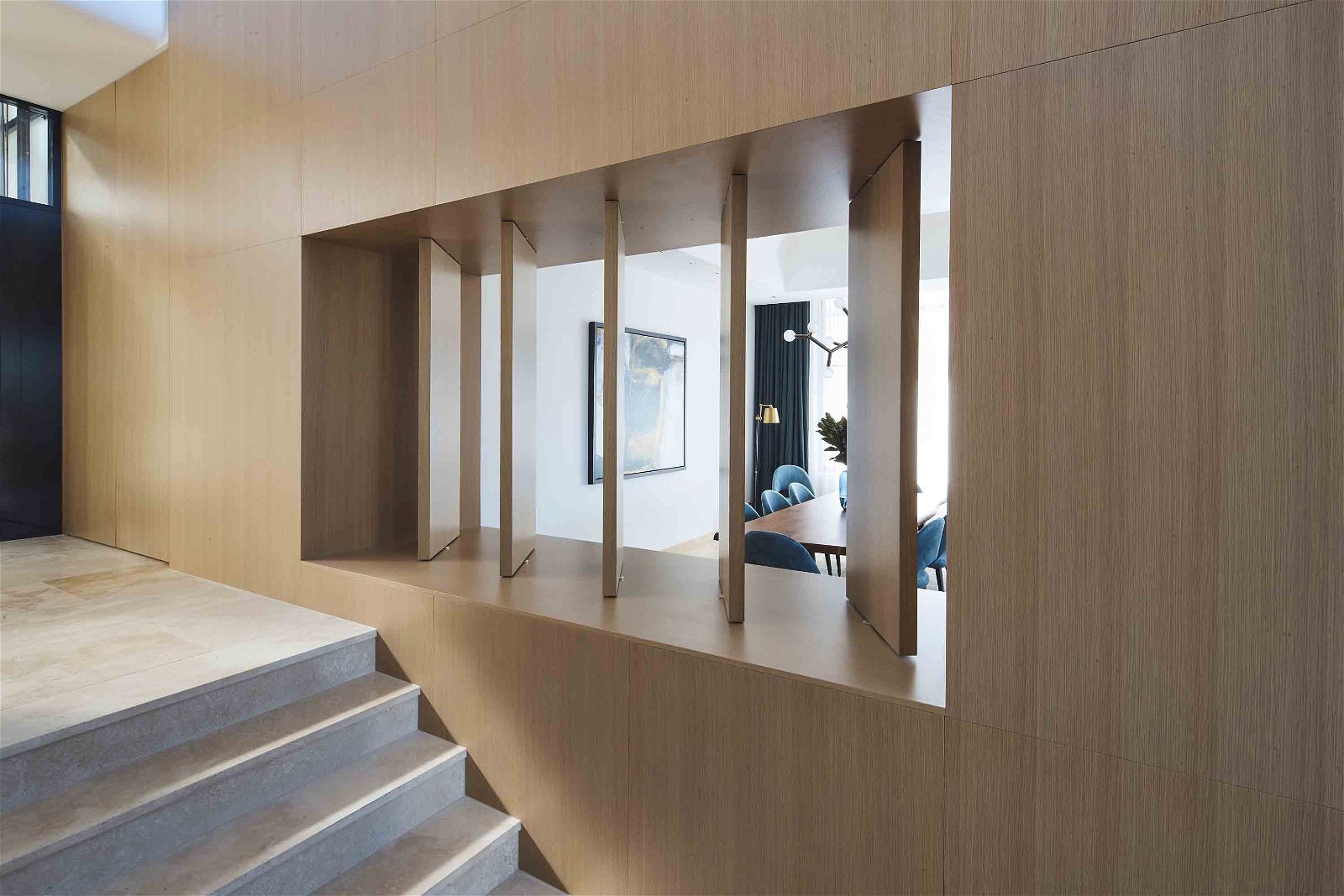3 pivot doors that aren’t doors
Three different makers and designers chose two of the same elements — wood and a FritsJurgens pivot hinge — and then went in completely different directions. One came up with a solution for hiding temporary furniture, another used an old technique in a modern way and applied an existing concept — louvers — to a surprising place.

Convenient hiding
Anyone familiar with the “tiny house” concept will understand that conveniently arranging every available square centimeter is not only a luxury but a requirement. With an average size of about 225 to 300 square feet, you should be able to conveniently store or hide items and furniture that you don’t need for a while. Multifunctional furniture is often used in these cases. For example, a bed that can be folded up and then transformed into a sofa or even a dining table.
However, these techniques can also be applied very well in a normal-sized home. Nabi Boyd designed a “pivot door” with a FritsJurgens System One pivot system. The door, which is actually a closet door, was made by MANEUVERWORKS. Behind it is a fold-out bed.

The pivot door hides the bed and provides extra privacy when the bed is folded out. This way, guests can spend the night comfortably while no extra guest room is needed in the house.
Compact winner
This pivot door is equipped with a FritsJurgens System One pivot system. It is an ideal system for this application because of its simplicity. System One is a compact system that, like all other FritsJurgens solutions, is hidden in the door. It has no hold positions or closing function and is therefore ideal for this application where the door is always in the closed or fully open position. System One has a load capacity of up to 500 kg, which means that this system’s application possibilities are virtually endless.

Louvers as smart space dividers
Space Joinery designed a completely different application with a System One pivot system. They used American oak to create a row of five vertical louvers that form an adjustable partition between the dining room and the hall. The louvers create a playful effect in the oak cupboard wall from the dining room side, and they are functional, too.

Functional elements
Louvers have been around for centuries in all shapes and sizes but were mainly used to keep out light and let in fresh air. The pivoting louvers in this project can change angles individually thanks to the System One pivot system, making them look a bit like vertical blinds. These pivoting louvers are not only design statements, but they are also functional. When open, they allow extra light and air to pass through—closed, they create privacy in the dining room and hall. It is a beautiful example of the impact that smart room dividers can have on an interior, both functionally and aesthetically. The advantage of the System One pivot hinges is that they are hidden in the louvers. This way, only a beautifully designed floor and ceiling plate are visible, and the focus remains on the sleek oak design.

Flexible spaces
There are many different possibilities to create flexible spaces with pivot systems. Not only System One is suitable for this application: System 3 is also a very suitable choice. System 3 can rotate 360˚ just like System One. System 3 has hold positions at 0˚, 90˚, 180˚ and 270˚ allowing easy positioning of large revolving walls. Besides, System 3 automatically moves to one of these locking positions and is therefore self-closing. This gives you complete control over the impact that a pivoting door or wall has on a room

Pivoting windows
It is actually quite logical: a FritsJurgens pivot system can also be used in a window. The principle is the same as with an exterior door, only a bit smaller. With the right accessories, a pivoting window with a FritsJurgens pivot system can easily be made weather-proof. Just like an exterior pivot door, a pivot window can be made moisture and draft repelling completely.

Balance
In this case, System 3 was used so that the window has various locking positions. The window is located right in the center of the house, and System 3’s hold position at 90 ° creates a balanced appearance. It is sober, simplistic and allows the rolling hilly landscape to do the talking without sacrificing quality and innovation.

One basis, three outcomes
In this case, System 3 was used so that the window has various locking positions. The window is located right in the center of the house, and System 3’s hold position at 90 ° creates a balanced appearance. It is sober, simplistic and allows the rolling hilly landscape to do the talking without sacrificing quality and innovation.

Discover even more special applications of the FritsJurgens pivot systems






